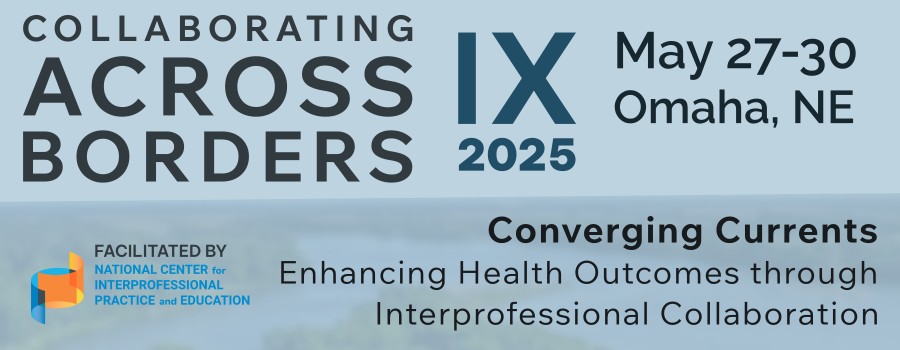Visioning Your Highest Possible Future to Advance Academic/ Practice Partnerships: A Workshop to a Design Shared Vision and Big Goals to Advance Your Collaborative Work
- Expanding Interprofessional Health and Social Care Teams and Collaborative Practice
Participants will be guided through a Highest Possible Future (HPF) exercise that supports you to identify shared vision and values among partners and dream about the aspirational impact your partnerships will achieve on behalf of learners and the individuals, families, communities and populations served. Clearly articulating your HPF will help sustain the partnership when predictable challenges bog you down as well as give you cause to celebrate the small and big accomplishments along the way.
This workshop and exercise are informed by the US National Center for Interprofessional Practice and Education’s NexusIPE™ Learning Model to support successful, sustained partnerships that can demonstrate return on investment for both academic and practice partners.Session outline with active learning strategies: The HPF tool will be introduced with examples highlighting impact.. The HPF supports partners and stakeholders to craft a shared vision for the aspirational goals of their collaboration, including driving outcomes that matter for people and learners served.
Participants will create a draft HPF for their interprofessional work.
Small groups will share their drafts and provide feedback.
The full group will reconvene to report out. Discussion focused on identifying key stakeholders from partner organizations, including individuals/ communities and learners served will highlight the need to think broadly about stakeholders and their various viewpoints, values, and aspirations before finalizing your HPF.
Participants will draft a preliminary stakeholder engagement plan, including identifying key stakeholders and engagement strategies for each.
The large group will reconvene for a report-out and closing conversation about how best to take this work forward with participants’ teams at home.
Learning Objectives
- Participants will discuss the US National Center for Interprofessional Practice and Education NexusIPETM Learning Model as a framework for developing, continuously improving, and evaluating interprofessional practice and education initiatives.
- Participants will articulate the value of working with practice and academic partners and stakeholders to create a shared statement of their interprofessional initiative’s Highest Possible Future for impact.
- Participants will identify key stakeholders, including learners and individuals, families, and/or communities served and strategies to engage them to develop a Highest Possible Future statement for their interprofessional initiative.
References
- Brandt, B., Dieter, C., & Arenson, C. (2023). From the Nexus vision to the NexusIPE™ Learning Model. Journal of Interprofessional Care, DOI: 10.1080/13561820.2023.2202223
- Cox, M. (Chair). Brandt, B.F., Palaganas, J. Reeves S., Wu, A.W., & Zierler, B. (2015). Measuring the impact on interprofessional education on collaborative practice and patient outcomes. Global Forum on Innovation in Health Professions Education, Board on Global Health, Health and Medicine Division, National Academies Press, Washington D.C. URL: https://www.nap.edu/read/25407/chapter/1
- Earnest, M., & Brandt, B. (2014). Aligning practice redesign and interprofessional education to advance triple aim outcomes. Journal of Interprofessional Care, 28(6), 1–4. DOI:10.3109/13561820.2014.933650
- Earnest, M., & Brandt, B. F. (2013). Building a workforce for the 21st century healthcare system by aligning practice redesign and interprofessional education. In Transforming patient care: Aligning interprofessional education with practice redesign. Proceedings of a conference chaired by Cox, M. and Naylor, M. Josiah Macy Jr. Foundation. https://macyfoundation.org/publications/transforming-patient-care-aligning-interprofessional-education-with-clinica
- Patton, M. Q. (2010) Developmental Evaluation. Applying Complexity Concepts to Enhance Innovation and Use. Guilford Press, New York.



